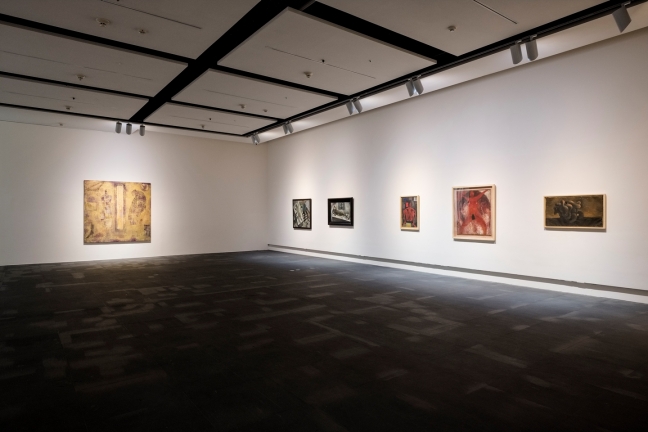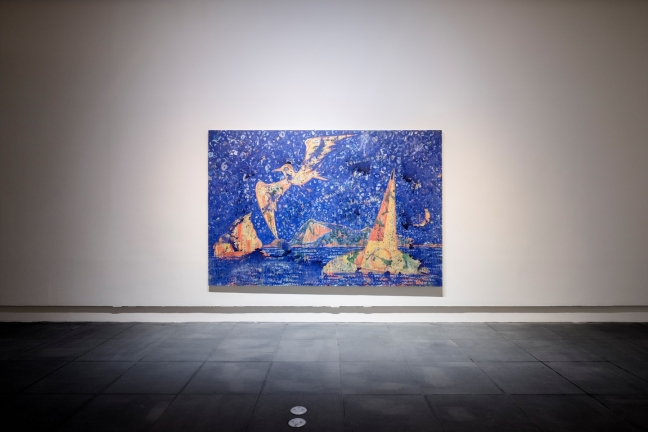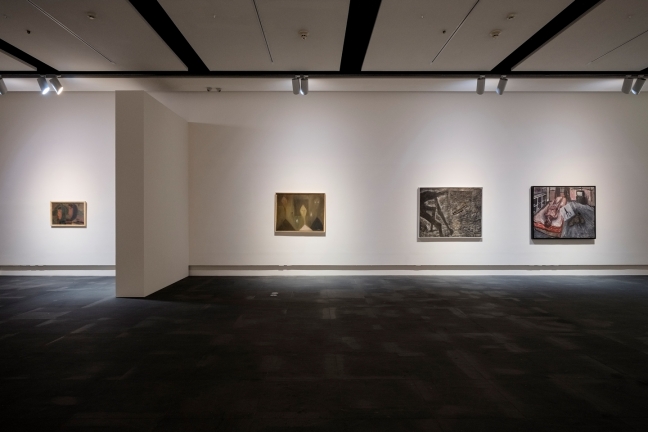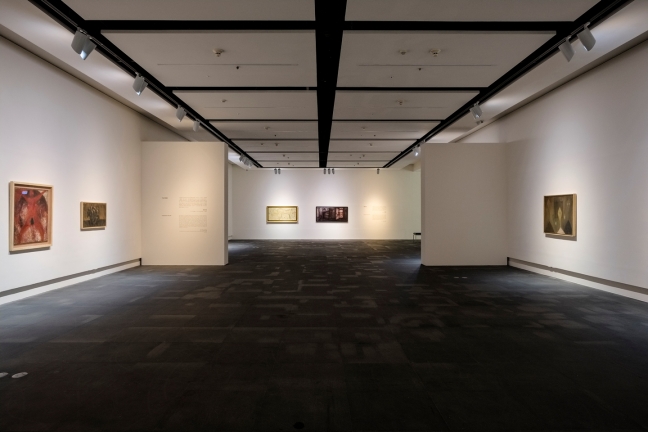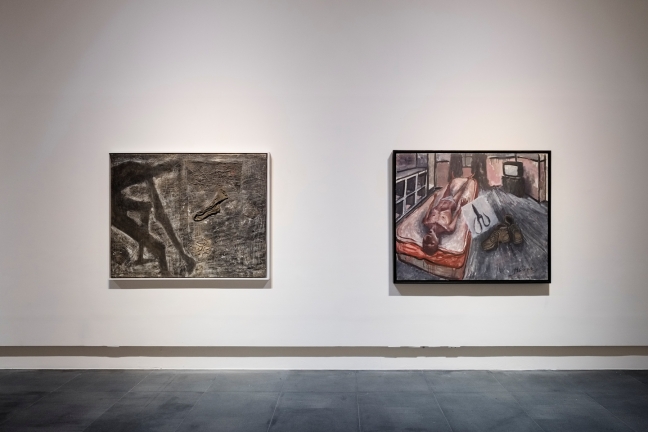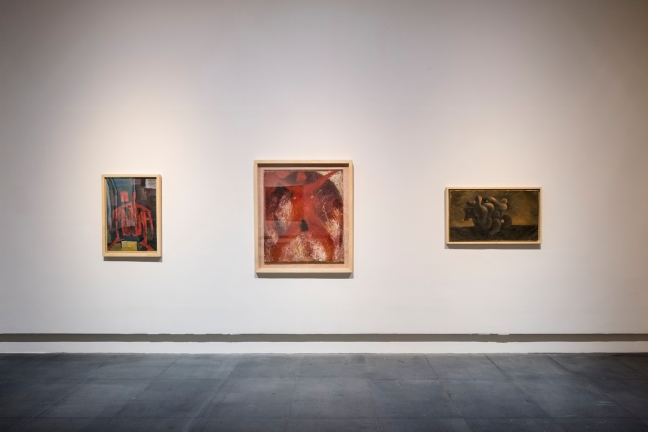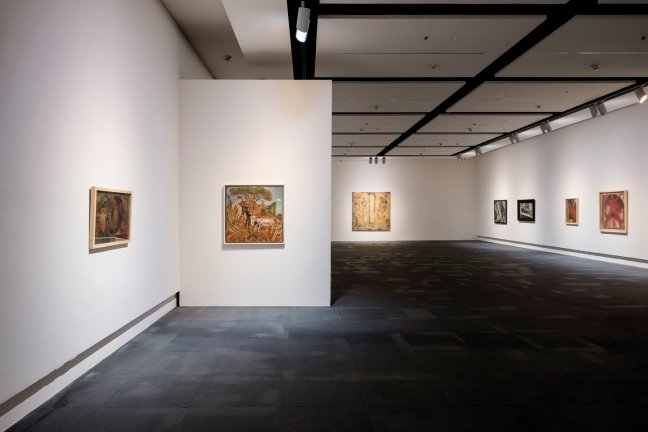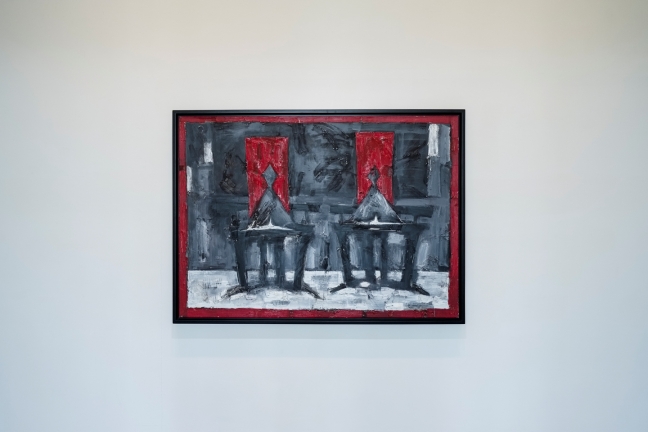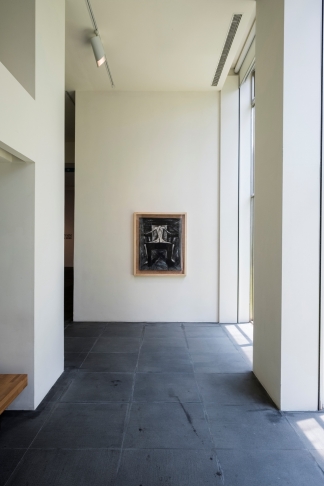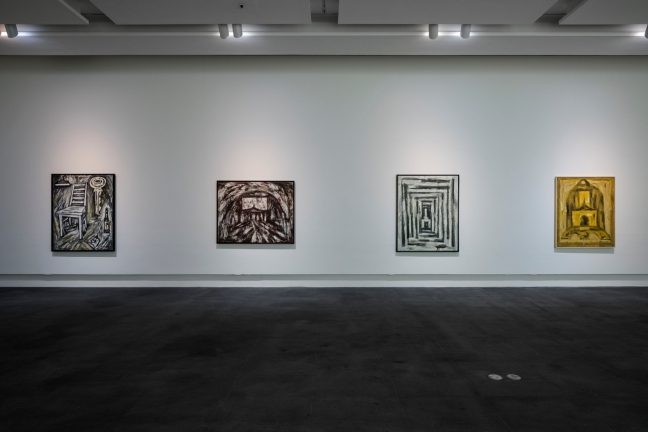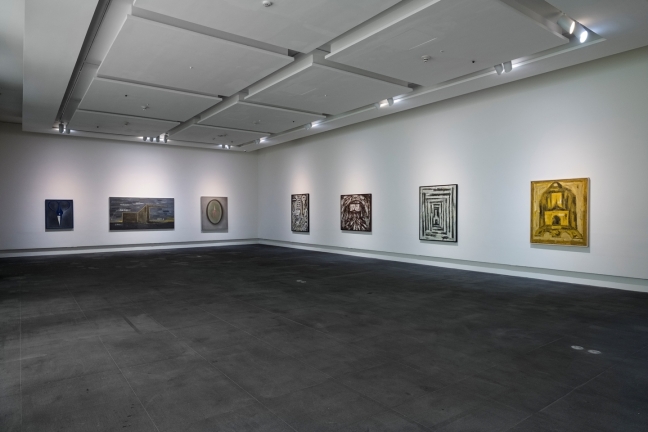MAO XUHUI:I’M HERE
2017.07.21~2017.09.24
09:00 - 17:00
MAO XUHUI:I’M HERE is the first time that artist Mao Xuhui will be holding a large-scale exhibition in Taiwan that comprehensively encompasses the context of his works. In addition to once again discussing ‘85 New Wave, the most important movement in Chinese art history, as the start to a historical axis, the exhibition also covers in detail the historical background and importance of Mao Xuhui’s role as a pioneer of Chinese art. The process of adjusting and arranging his works began as far back as 1981. At the same time, a large amount of time was spent working to borrow the works from the hands of various collectors to prepare them for this exhibition. Furthermore, a series of photos, documents, and other files recording major historical moments, exhibitions, and events will once again be reproduced within the venue of this exhibition. ‘85 New Wave is the most important movement in the art history of twentieth century China. It created a new historical era, shattering the singular use of art as a tool of political propaganda and launching the first step in contemporary Chinese art. During this period, a large number of outstanding artists and works began to appear in Chinese art history. Mao Xuhui is one of the important leaders of ‘85 New Wave, his works emphasize an introverted sense of self and reflect upon the value of individual life and existence. Whether they adopt a symbolic or metaphorical approach, his works all refuse to serve as complete reproductions of scenes from metaphysical life. Mao Xuhui did not employ a style familiar to the art world at the time, he was an artist who did not acknowledge
popular” models of art. From his work, Red Figure, created during the ‘85 New Wave movement, one can see his ridding of the influence of local realism at the time, while changing to a more expressionist language of painting to depict the gray shades of the human spirit and psychology amidst a faint background of social unrest. The depiction of objects from daily life is another focus of Mao Xuhui’s art. Drawing from fragments of daily life, he places common objects into his images, proposing the slogan:
What is the new figurativeness? It is the figurativeness of the mind, the figurativeness of the soul.” On the surface, this focus of his art is influenced by the actual conditions of his life, however, subconsciously, this is how the artist faces emotional projections during social change. In the composition of works, such as The Scissors in the Mirror · Spring, Eternity · Dedicated to Hrabal, and Nirvana · From Purple to Gold (The Disappearance and Rebirth of a Design Studio), a large number of scissors, chairs, purple, gold, and other symbolic schema intentionally convert the fixed symbolic meanings of the images to further allude how the era serves as a representation of power and a reference to human life. The uniqueness of Mao Xuhui is captured in a statement by curator Feng Boyi:
His works frequently carry a realistic relevance - relating to various issues invoked by social upheaval and eras of change, as well as his personal situations and experiences during these times. This is indeed the main clue for interpreting the art of Mao Xuhui.”
popular” models of art. From his work, Red Figure, created during the ‘85 New Wave movement, one can see his ridding of the influence of local realism at the time, while changing to a more expressionist language of painting to depict the gray shades of the human spirit and psychology amidst a faint background of social unrest. The depiction of objects from daily life is another focus of Mao Xuhui’s art. Drawing from fragments of daily life, he places common objects into his images, proposing the slogan:
What is the new figurativeness? It is the figurativeness of the mind, the figurativeness of the soul.” On the surface, this focus of his art is influenced by the actual conditions of his life, however, subconsciously, this is how the artist faces emotional projections during social change. In the composition of works, such as The Scissors in the Mirror · Spring, Eternity · Dedicated to Hrabal, and Nirvana · From Purple to Gold (The Disappearance and Rebirth of a Design Studio), a large number of scissors, chairs, purple, gold, and other symbolic schema intentionally convert the fixed symbolic meanings of the images to further allude how the era serves as a representation of power and a reference to human life. The uniqueness of Mao Xuhui is captured in a statement by curator Feng Boyi:
His works frequently carry a realistic relevance - relating to various issues invoked by social upheaval and eras of change, as well as his personal situations and experiences during these times. This is indeed the main clue for interpreting the art of Mao Xuhui.”
MAO XUHUI:I’M HERE is the first time that artist Mao Xuhui will be holding a large-scale exhibition in Taiwan that comprehensively encompasses the context of his works. In addition to once again discussing ‘85 New Wave, the most important movement in Chinese art history, as the start to a historical axis, the exhibition also covers in detail the historical background and importance of Mao Xuhui’s role as a pioneer of Chinese art. The process of adjusting and arranging his works began as far back as 1981. At the same time, a large amount of time was spent working to borrow the works from the hands of various collectors to prepare them for this exhibition. Furthermore, a series of photos, documents, and other files recording major historical moments, exhibitions, and events will once again be reproduced within the venue of this exhibition. ‘85 New Wave is the most important movement in the art history of twentieth century China. It created a new historical era, shattering the singular use of art as a tool of political propaganda and launching the first step in contemporary Chinese art. During this period, a large number of outstanding artists and works began to appear in Chinese art history. Mao Xuhui is one of the important leaders of ‘85 New Wave, his works emphasize an introverted sense of self and reflect upon the value of individual life and existence. Whether they adopt a symbolic or metaphorical approach, his works all refuse to serve as complete reproductions of scenes from metaphysical life. Mao Xuhui did not employ a style familiar to the art world at the time, he was an artist who did not acknowledge
popular” models of art. From his work, Red Figure, created during the ‘85 New Wave movement, one can see his ridding of the influence of local realism at the time, while changing to a more expressionist language of painting to depict the gray shades of the human spirit and psychology amidst a faint background of social unrest. The depiction of objects from daily life is another focus of Mao Xuhui’s art. Drawing from fragments of daily life, he places common objects into his images, proposing the slogan:
What is the new figurativeness? It is the figurativeness of the mind, the figurativeness of the soul.” On the surface, this focus of his art is influenced by the actual conditions of his life, however, subconsciously, this is how the artist faces emotional projections during social change. In the composition of works, such as The Scissors in the Mirror · Spring, Eternity · Dedicated to Hrabal, and Nirvana · From Purple to Gold (The Disappearance and Rebirth of a Design Studio), a large number of scissors, chairs, purple, gold, and other symbolic schema intentionally convert the fixed symbolic meanings of the images to further allude how the era serves as a representation of power and a reference to human life. The uniqueness of Mao Xuhui is captured in a statement by curator Feng Boyi:
His works frequently carry a realistic relevance - relating to various issues invoked by social upheaval and eras of change, as well as his personal situations and experiences during these times. This is indeed the main clue for interpreting the art of Mao Xuhui.”
popular” models of art. From his work, Red Figure, created during the ‘85 New Wave movement, one can see his ridding of the influence of local realism at the time, while changing to a more expressionist language of painting to depict the gray shades of the human spirit and psychology amidst a faint background of social unrest. The depiction of objects from daily life is another focus of Mao Xuhui’s art. Drawing from fragments of daily life, he places common objects into his images, proposing the slogan:
What is the new figurativeness? It is the figurativeness of the mind, the figurativeness of the soul.” On the surface, this focus of his art is influenced by the actual conditions of his life, however, subconsciously, this is how the artist faces emotional projections during social change. In the composition of works, such as The Scissors in the Mirror · Spring, Eternity · Dedicated to Hrabal, and Nirvana · From Purple to Gold (The Disappearance and Rebirth of a Design Studio), a large number of scissors, chairs, purple, gold, and other symbolic schema intentionally convert the fixed symbolic meanings of the images to further allude how the era serves as a representation of power and a reference to human life. The uniqueness of Mao Xuhui is captured in a statement by curator Feng Boyi:
His works frequently carry a realistic relevance - relating to various issues invoked by social upheaval and eras of change, as well as his personal situations and experiences during these times. This is indeed the main clue for interpreting the art of Mao Xuhui.”

